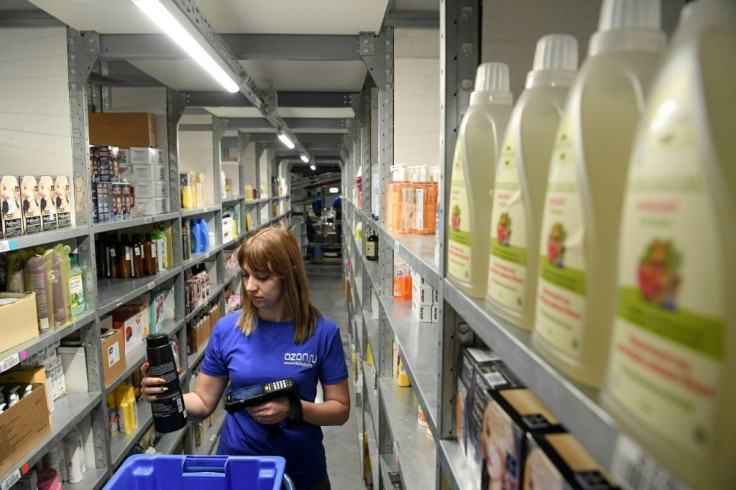Return To Sender: Retailers Bracing For Deluge Of Post-Holiday Product Returns

KEY POINTS
- Returns cut profits of retailers who already operate on thin margins
- Record-breaking holiday retail sales will likely lead to avalanche of post-holiday returns
- Some retailers have policies to dissuade excessive returns
Retailers have been rejoicing over record-breaking Black Friday sales and a substantial jump in online purchases, but just like the morning after, they're bracing for the post-holiday hangover of returns and are looking for ways to stem the excess.
Black Friday online sales totaled $7.4 billion, with Adobe Analytics predicting a 20% increase for the holiday season. The National Retail Federation is predicting an overall increase in holiday spending between 3.8% and 4.2%, to as much as $730.7 billion.
But bigger retail sales, whether online or in-person, inevitably leads to higher rates of customers returning products – sometimes to excessive levels.
Forbes reported returns are expected to cost U.S. retailers some $550 billion in 2020. Across the world, 17 billion items are returned every year.
Bloomberg reported some retailers have grown weary of customers returning products too many times. In extreme cases, they have even threatened to cut off those who return goods repeatedly. At risk is the bottom line, as too many returned products waste employee time and company money, thereby cutting profits in an industry already operating on thin margins.
Plus, all those returned items must sit in storage somewhere.
Research firm Appriss reported U.S. customers returned $369 billion in goods last year -- 10% of total retail sales -- up from $260 billion in 2015.
United Parcel Service Inc. (UPS) said during the holiday season it expects to handle 1 million packages containing returned merchandise every day, hitting a high of 1.9 million on Jan. 2, a 26% surge from last year’s maximum.
A number of retailers have imposed policies to limit or end excessive returns -- Urban Outfitters Inc.’s (URBN) Anthropologie brand charges a fee for returns by mail, Fashion Nova now offers in-store credit instead of refunds, and Abercrombie & Fitch (ANF) plans next year to reject returns without a receipt, invoice or order confirmation.
The Wall Street Journal reported Amazon (AMZN) has actually imposed lifetime bans on some customers for excessive returning of goods.
“There’s a lot of abuse going on, which is why some of these retailers are implementing stricter policies,” said Gabriella Santaniello, founder of the consulting firm A Line Partners.
David Egan, head of industrial and logistics research for real estate advisory firm CBRE, commented the situation can be improved, "but it’s not clear that we can fix it until we convince people not to overbuy." Egan added businesses must decide whether the cost of the returns "is outweighed by the lifetime value of the customer.”
But some retailers will still allow shoppers to return products without limitation
Richard Galanti, chief financial officer at Costco Wholesale Corp. (COST), conceded that some consumers abuse their liberal returns policy. “But generally speaking, we trust our members and our members trust us,” he added.
Elain Szu, vice president of marketing at Narvar, a firm that provides companies with software to improve the post-purchase experience, noted Amazon, which controls about 50% of the e-commerce market, has a difficult returns policy despite its image of providing easy and frictionless service.
“Amazon is worse across the board than non-Amazon brands,” Szu said, including such annoyances to customers as “printing a return label, needing return authorization, scheduling a pickup and finding a box or envelop to return in.”
But Szu conceded Amazon “does an excellent job of being transparent about the status of returns. It does a good job of giving the consumer information when the item is received and a refund issued.” Amazon also uses a logistics system that cut costs.
Szu recommended retailers need to simplify the returns process to build customer loyalty.
“Given how high customer acquisition costs are for brands and retailers, the most critical thing for anyone is to drive repeat business to build up the customers’ lifetime value,” she said. “If the returns process is difficult, you’re four times more likely to lose a new customer.”
Szu also said while retailers want to reduce the rate of returns and customers want more return options, “in the end what retailers really want is to drive as many people as possible to come back and make another purchase. And that means you have to make returns easy.”
Fashion and apparel retailers typically see an avalanche of returned items, particularly during the holidays, usually due to the customers buying the wrong sizes. But some retail experts say there’s little that companies can do to stamp out the practice of returning products.
"Free returns have become a basic expectation for shoppers across every category, and so I don’t think there’s any easy way to claw back this benefit when other competitors happily provide it," wrote Mark Ryski, CEO of HeadCount Corp., an authority on retail traffic and customer conversion analysis.
Similarly, Paula Rosenblum, principal at RSR Research, which studies the impact of technology on the retail industry, wrote returns "are just part of the cost of doing business direct to consumers. I don’t see any way around it -- a return replaces the fitting room, really. Try it on. If you like it, keep it. If not, send it back. Think how many more items you try on in-store that you don’t buy. That’s what happens online. But it is a bit worse, as the product doesn’t get dirty or wrinkled on a trip to the fitting room. It can be both when it has made a round trip to the consumer and back."
© Copyright IBTimes 2025. All rights reserved.





















